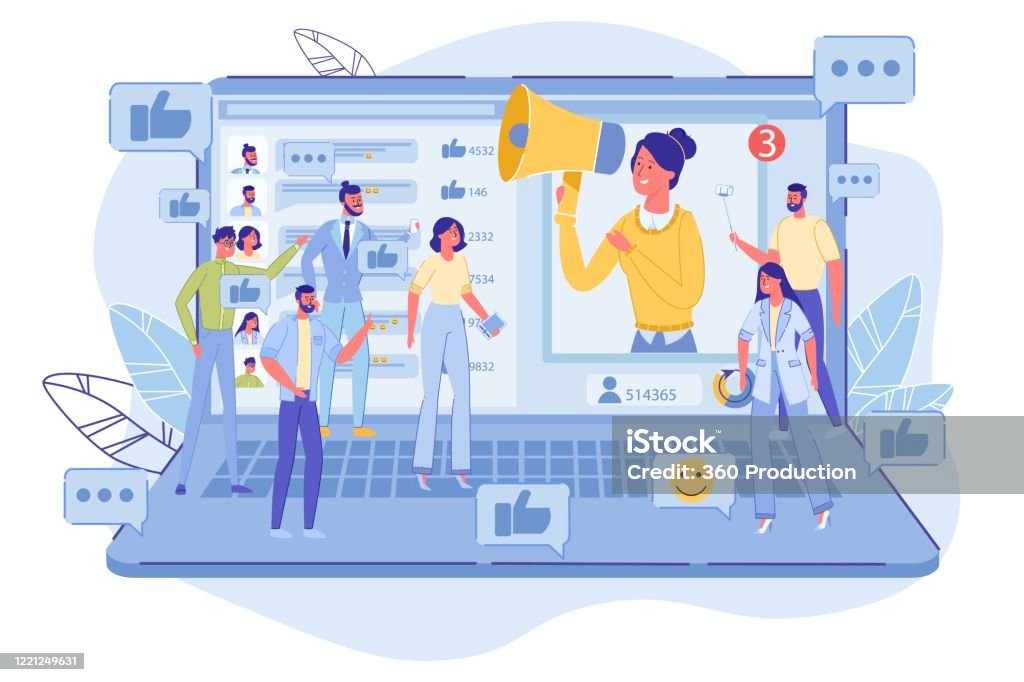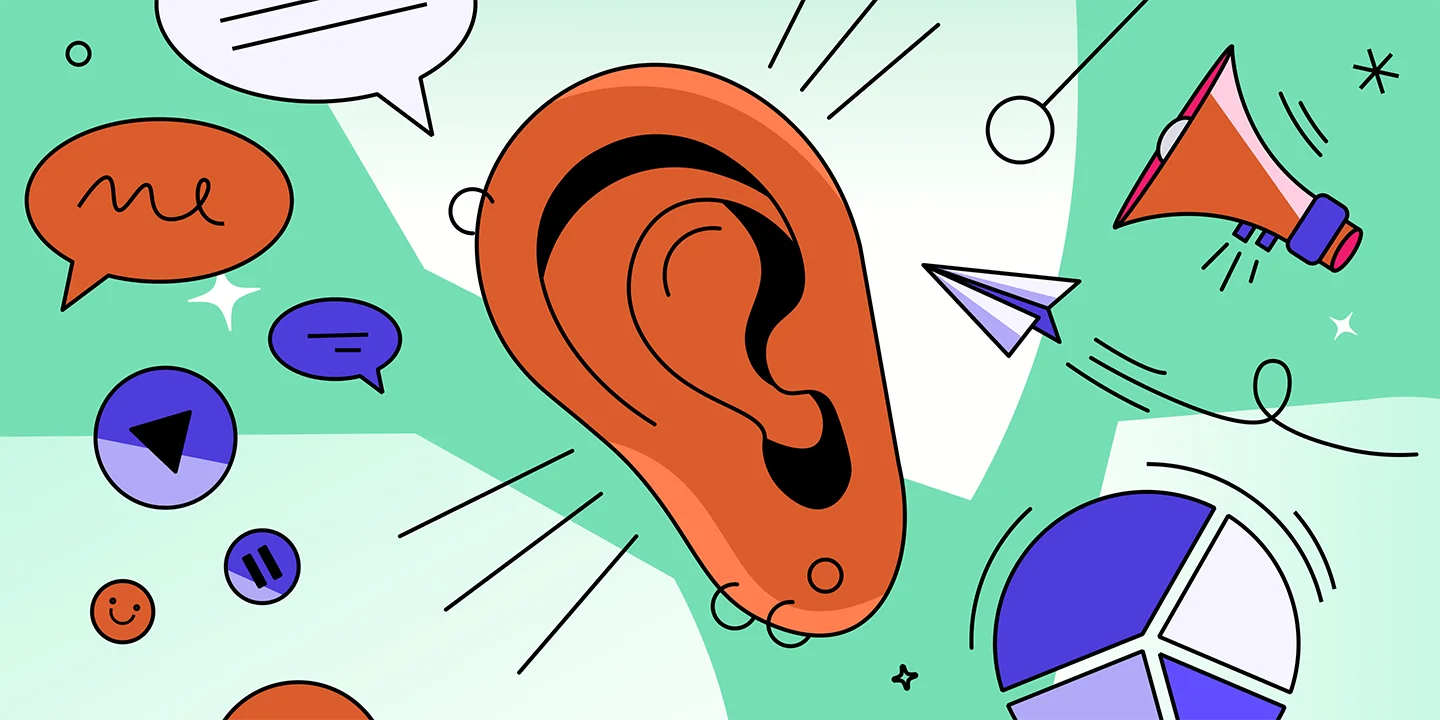Active listening is considered a key skill for effective communication. Do you really listen to your brand’s audience and their opinions? As a brand, you want your message to be heard and listened to by the audience as much as possible. However, it applies the same to your audiences. With social listening, you can identify customers’ pain points and needs without digging endlessly for answers. Having this practice in place will help you have a transparent conversation with them, and you’ll learn more about them. Follow social listening best practices to gain insights and act upon those opportunities.
Table of Contents
Ever Heard About Social Listening?
Social listening is the practice of analyzing conversations with audiences and knowing trends related to your brand. It is a way of identifying how the audience perceives your brand by analyzing direct mentions, feedback, or other discussions. Getting insights from them helps brands make informed business decisions, particularly for marketing campaigns. It indicates that knowing your audience’s voice is crucial for any business to address their pain points and needs in order to achieve customer satisfaction as well as their business goals.
Is Social Monitoring or Social Listening the Same?
People often confuse these terms with their implementation. However, these terms are slightly different in their roles. Social listening is a holistic term and has a broader concept than social monitoring. You can track every mention, feedback, and trend related to your brand through social listening. While in social monitoring, you narrow down your focus and scrutinize only mentions, keywords, and feedback related to your particular marketing campaign.
Social Listening Best Practices You Need to Know
Have Clear Objectives
Having a clear objective for social listening helps you listen to the noise of the audience more effectively. With the sheer volume of data available at your disposal, you must know where to tap and what and how to know. Defining your goal will help you sift through the noise and listen to conversations that matter most to your business.
For every goal you want to achieve through social listening, set a KPI and metrics. For example, if you want to enhance customer support, you’ll identify the audience’s complaints and grievances related to your services.

Know Exactly What You Need to Listen About
With the right tools, you can listen to almost everything related to your brand. But, what exactly do you want to hear? Have a strategy and list what you particularly or exactly want to hear about your brand. To be more specific, are you looking for specific brand mentions, feedback, keywords related to the industry or your brand, key employees, products or services, and others? The best practice is to add less-official related keywords, e.g., misspelled keyword abbreviations.
Review Your Competitors
Social listening is not all about listening to your own audience and identifying their needs. However, you must be keen on analyzing your competitors too. Know what your competitors are doing online and how their campaigns are interacting with their audience. This will help you gain valuable insights from the activities they promote better than your brand. You’ll get ideas and know about your competition to improve your marketing activities.
The more you know about your competition, the better you’ll become at devising strategies.
Choose the Right Tools
Choosing from a vast array of tools can be overwhelming if you are not experienced. There are tools dedicated to social listening that you can use to enhance your analytical depth. In order to achieve the right outcomes of social listening, use specialized or the right tools for that matter. You can’t do this practice on your own, but you’ll need the right tools to amp up the effectiveness of this process. There are several tools available; using them will help you monitor social interactions and keywords to achieve your goals.
Audience Segmentation
Knowing your audience in depth solves half of your marketing problems. To make the most of social listening tools, segment your audience and personalize content. Gone are the days when brands used to create a one-size-fits-all approach. However, this has been revoked due to the increased demand for personalization among consumers. Giving a personal touch to the message engages customers and fosters a sense of loyalty.
When you segment your audience, you’ll better analyze their sentiments and address them effectively.
Advantages of Social Listening
Competitive Edge
With the right tools, you can track keywords and mentions related to your industry and sector. When you get data, you’ll find out how people are reacting to your competition. Identifying the feedback related to the same industry keyword will help you capitalize on the opportunity and address the shortcomings audiences are facing in a particular sector or company.
Identify a Loyal Audience
With this practice of social listening, you’ll be good at finding out who is expressing positive sentiments about your services. You can, in turn, reward them and personalize their journey with your brand. Moreover, you can also identify the number of audience members who are turning into brand advocates and spreading positive messages about your brand. This will help build relationships with your loyal audience.
Increased Engagement
The more you listen, the better it promotes engagement. You’ll understand the conversation effectively when you listen and engage with your audience. When you jump into the conversation, whether you are tagged or not, you’ll be able to respond to the comments to promote real-time engagement. It generates goodwill among consumers as it shows that the brand values and listens to its audience.
Crisis Management
So whenever a calamity hits, you must have a backup plan in order to remedy the situation. When you actively engage in social listening, you’ll identify the pain points ahead of any crisis. In times of brand crisis, social listening helps track customer sentiments and address them in real-time and more effectively. It lessens the intensity of the crisis, and you’ll make better statements based on listening sentiments.
Maximize Your Marketing Efforts with Social Listening
Brands can use this tool to embrace and scale the different sentiments of their audience. Social listening is a key practice for analyzing how people perceive your brand and how they behave around your products and services. Such interaction between brand and audience helps identify pain points and also helps brand advocates spread positive messages related to your brand. This tool can influence decision-making for marketers, and they’ll make informed decisions for their marketing campaigns.
Eager to refine your social listening game? Let’s tailor a strategy to make your brand resonate louder. Book a call with us now!
FAQs
- How does social listening differ from traditional market research?
Social listening provides real-time, unfiltered insights from online conversations, while traditional market research relies on surveys, focus groups, and historical data. Social listening captures organic audience sentiment without direct prompting.
- What industries benefit the most from social listening?
Any industry that engages with customers online can benefit, including retail, healthcare, finance, entertainment, and technology. It helps brands understand trends, customer concerns, and competitor strategies.
- How often should a business conduct social listening?
Businesses should conduct social listening continuously to stay updated on brand mentions, customer feedback, and emerging trends. Real-time monitoring helps respond to potential issues before they escalate.
- What are some common mistakes in social listening?
Some businesses focus only on direct brand mentions and ignore industry trends, competitor insights, or customer sentiment analysis. Others fail to act on the data they collect, missing valuable opportunities.
- Can small businesses use social listening effectively?
Yes, small businesses can use affordable social listening tools to track mentions, analyze customer feedback, and refine their marketing strategies. Even with limited resources, they can gain insights to improve customer engagement.


















